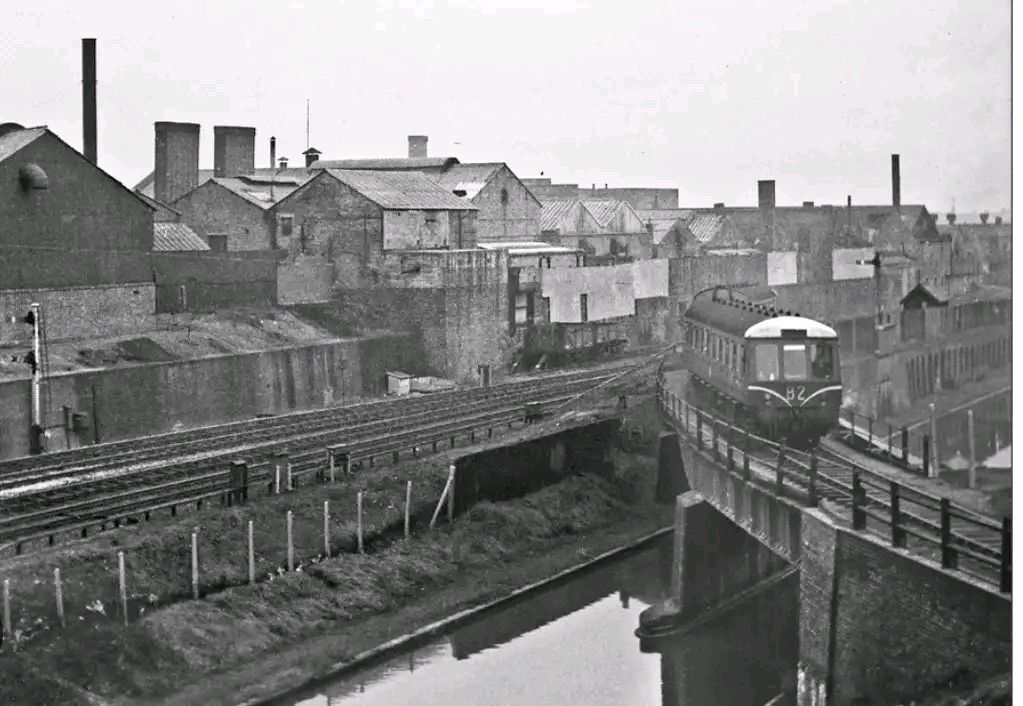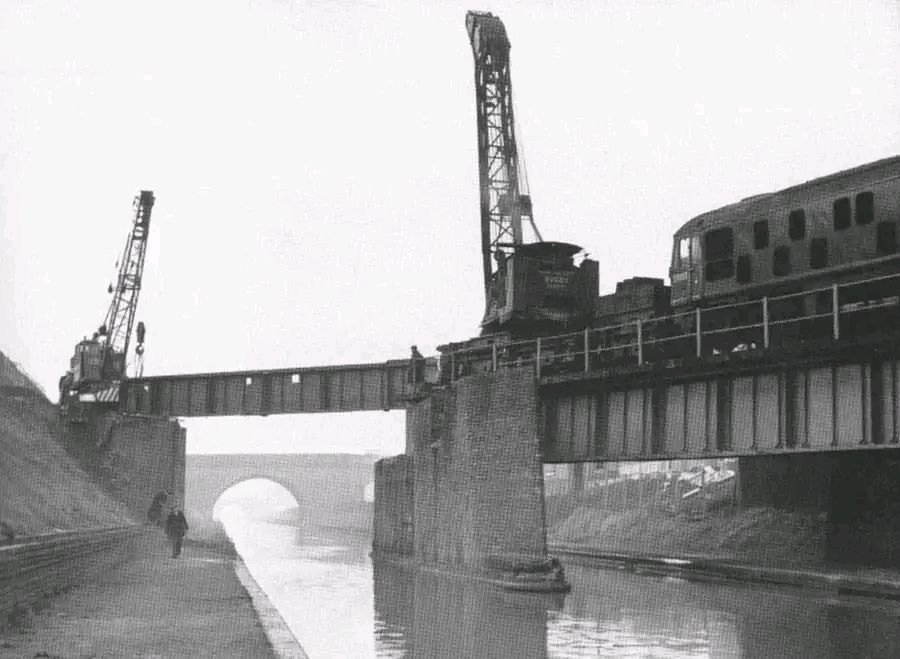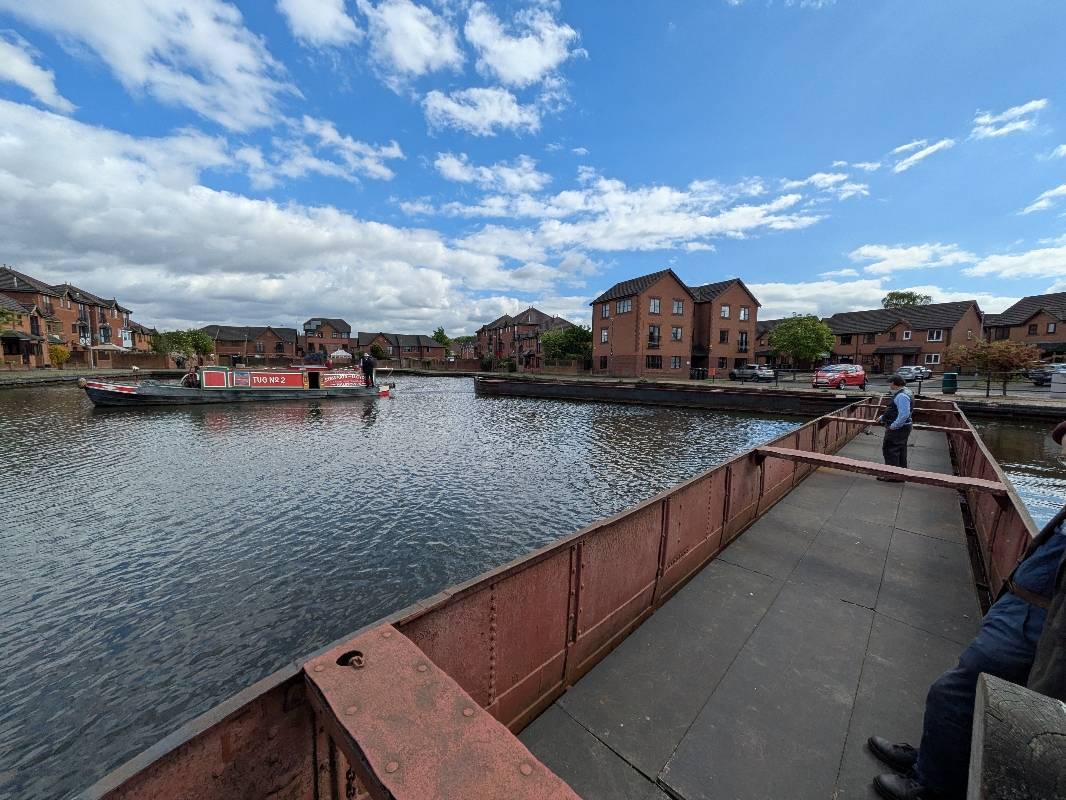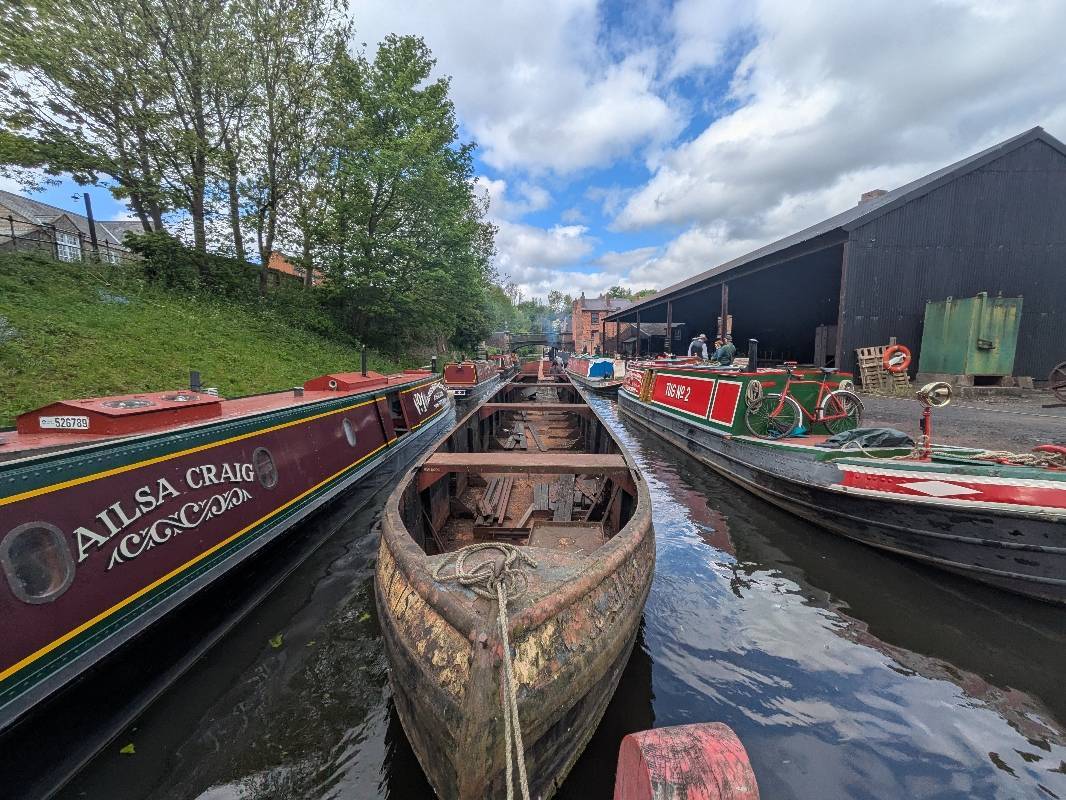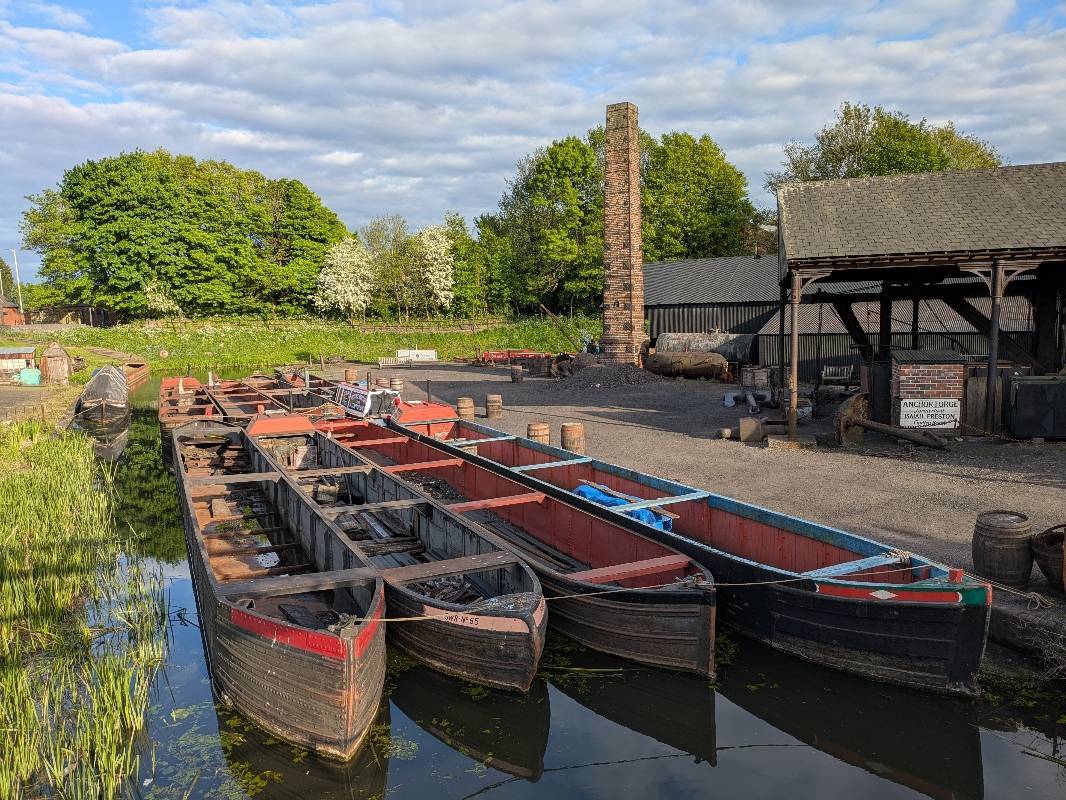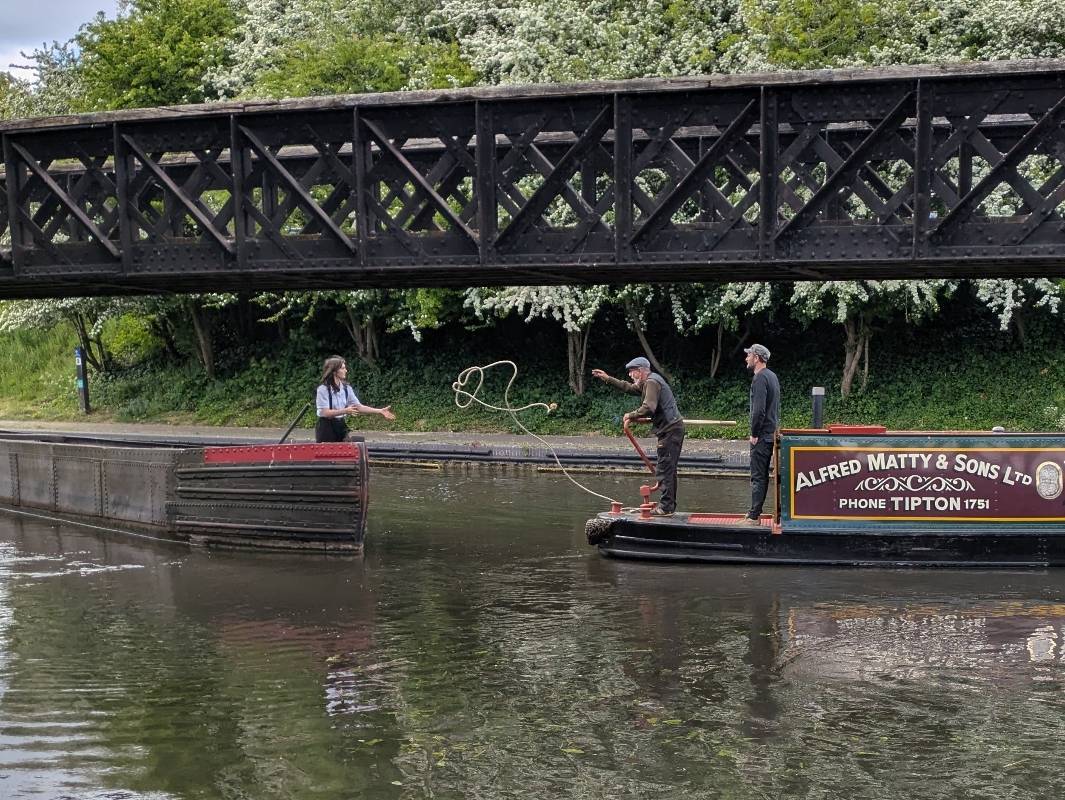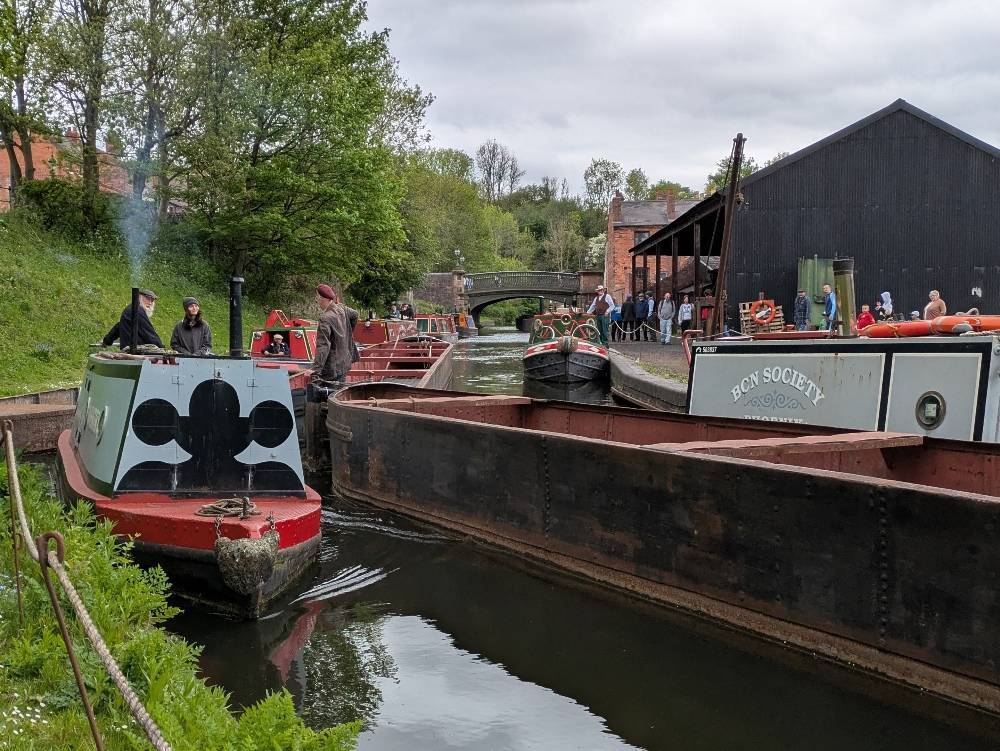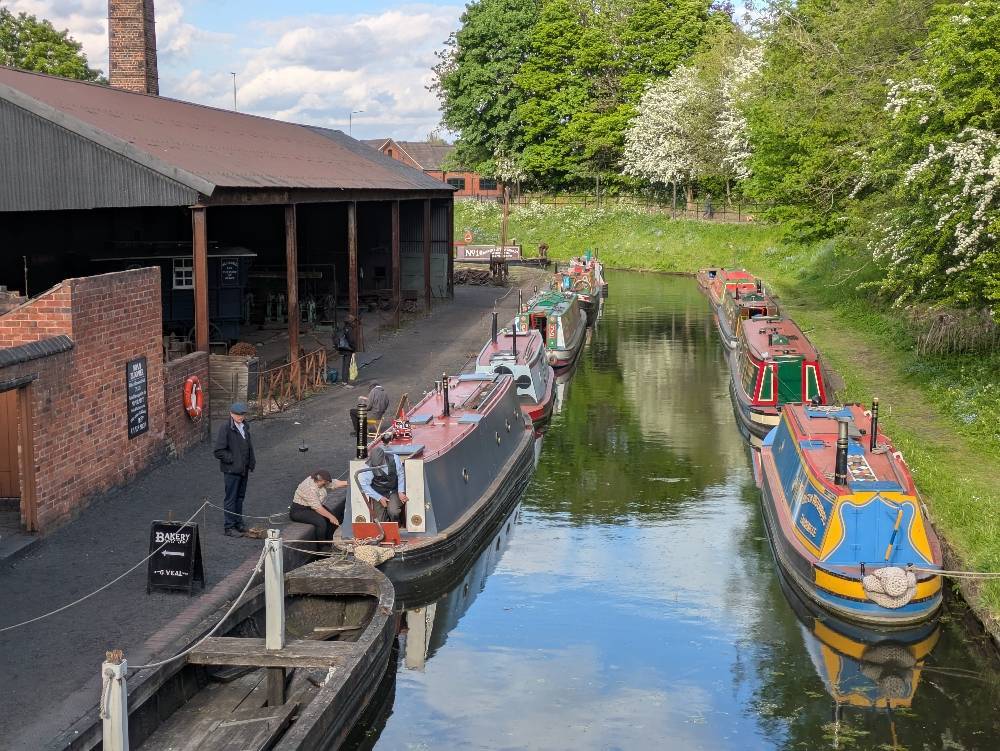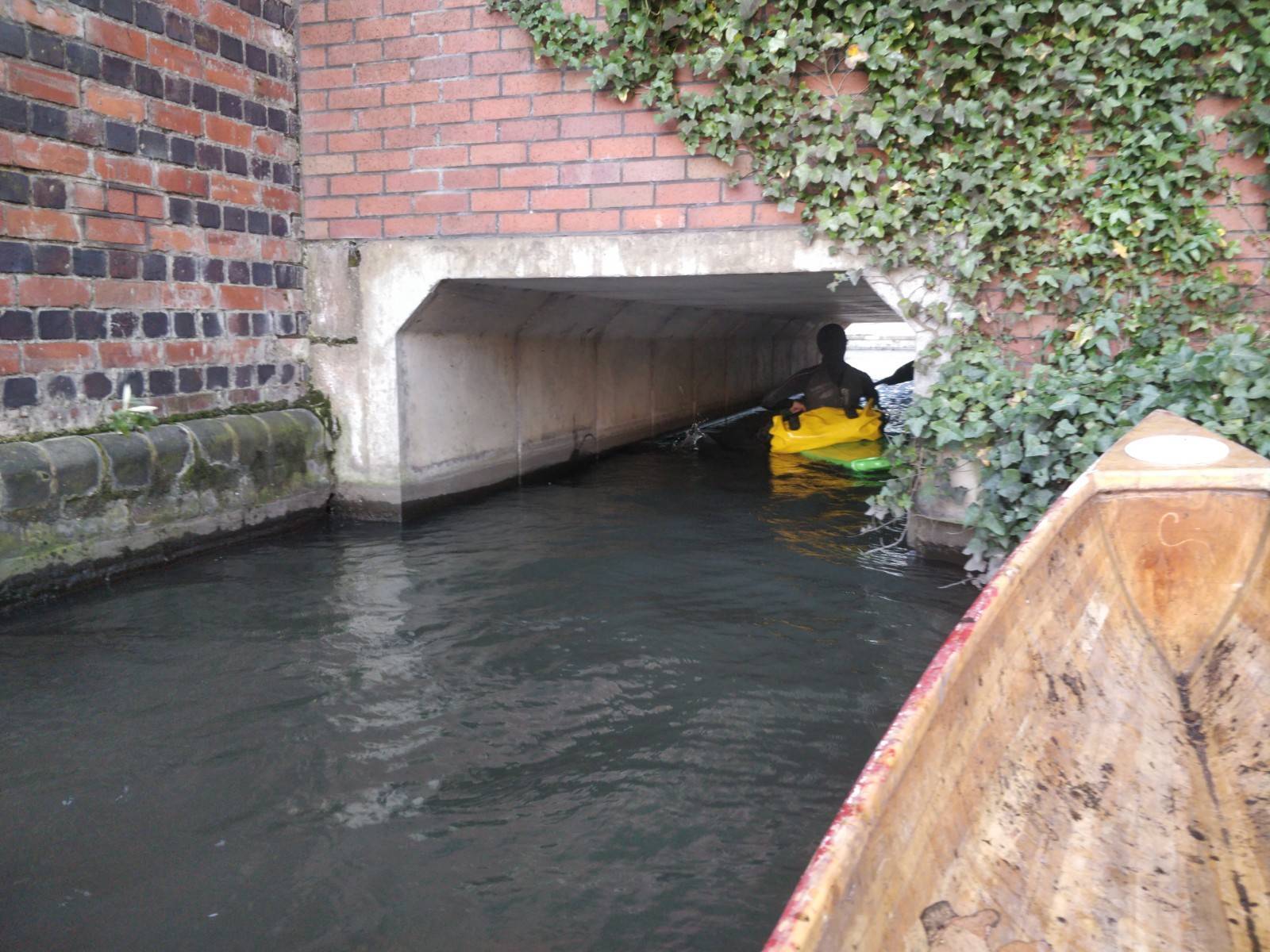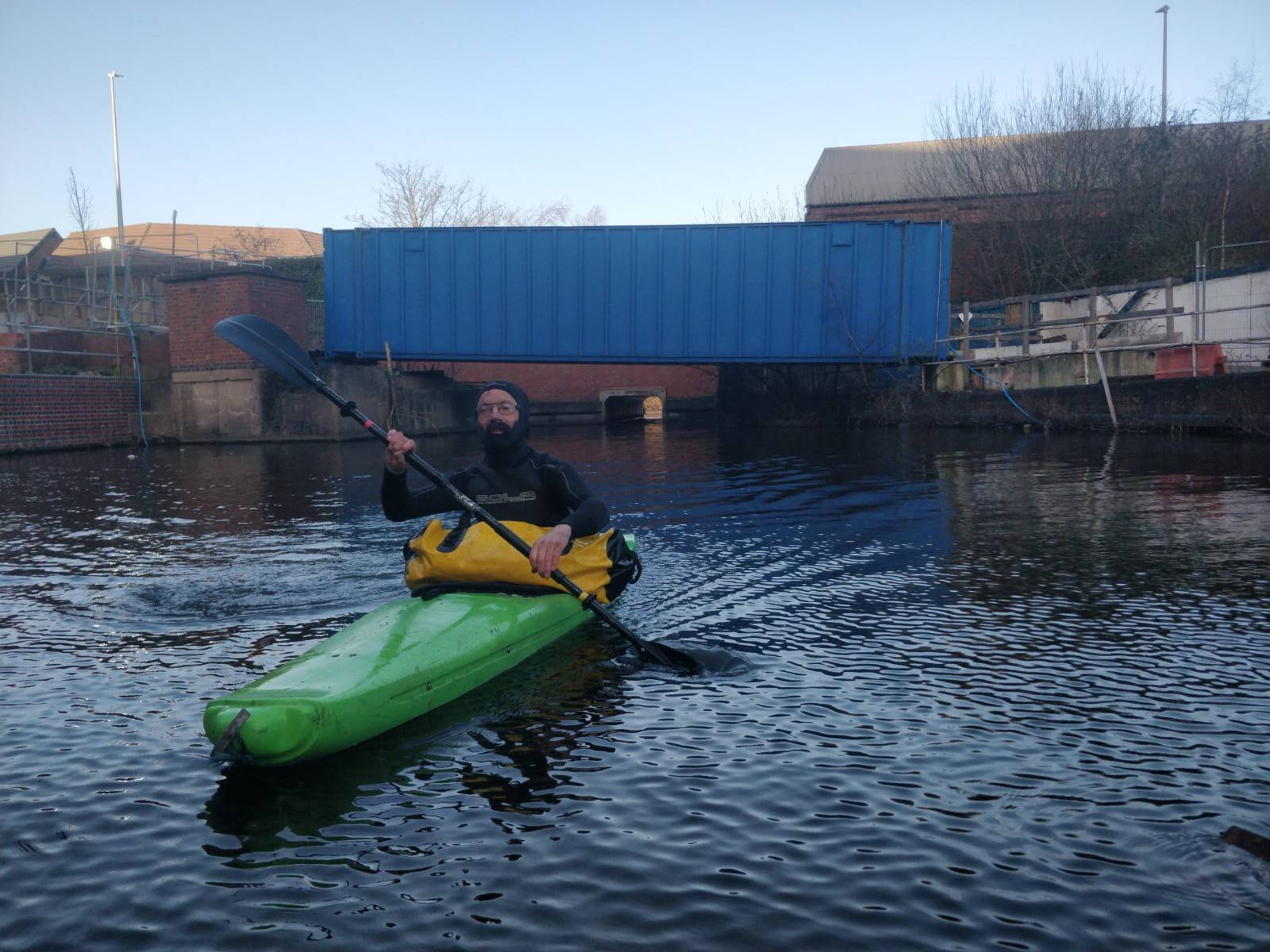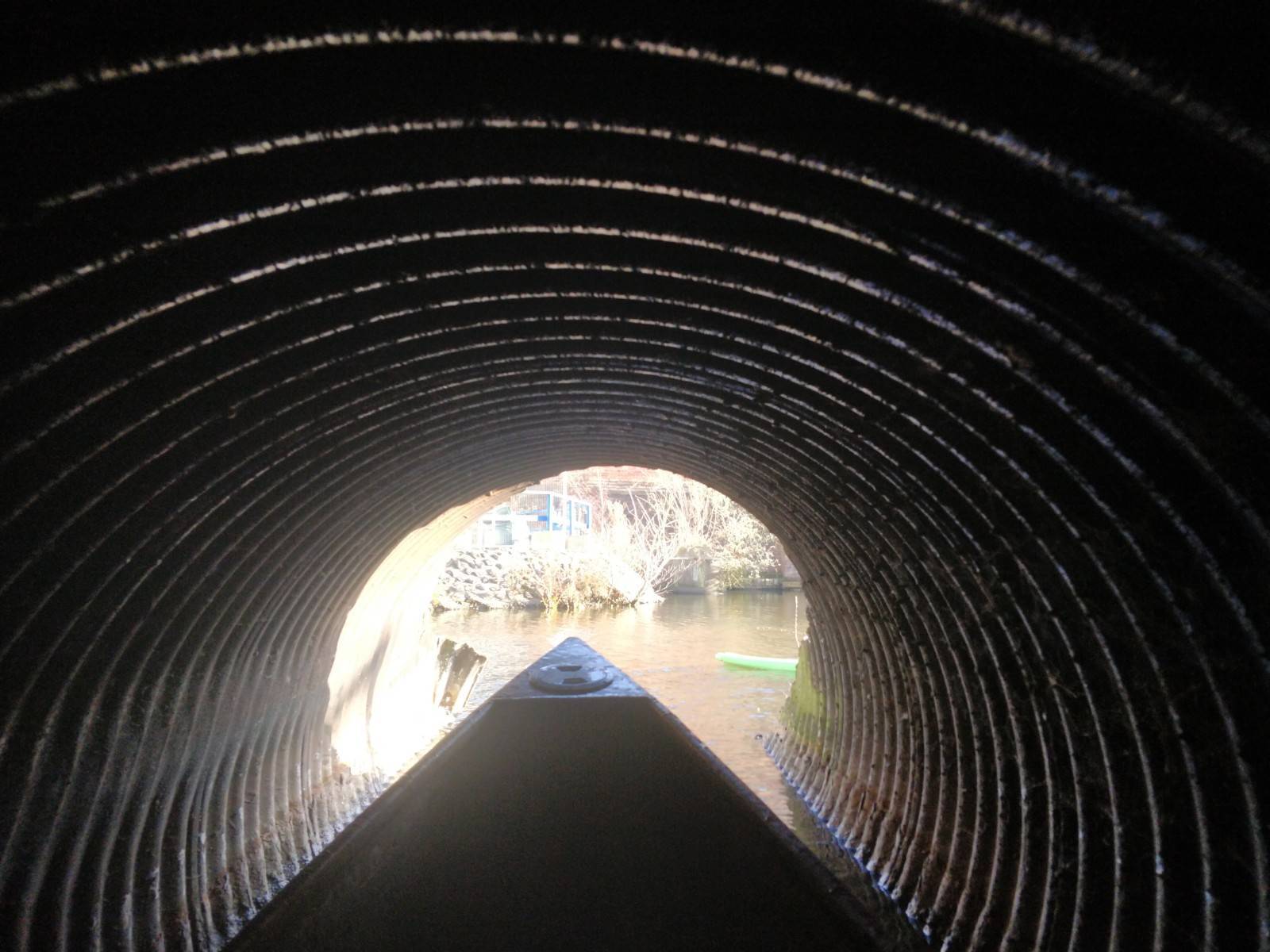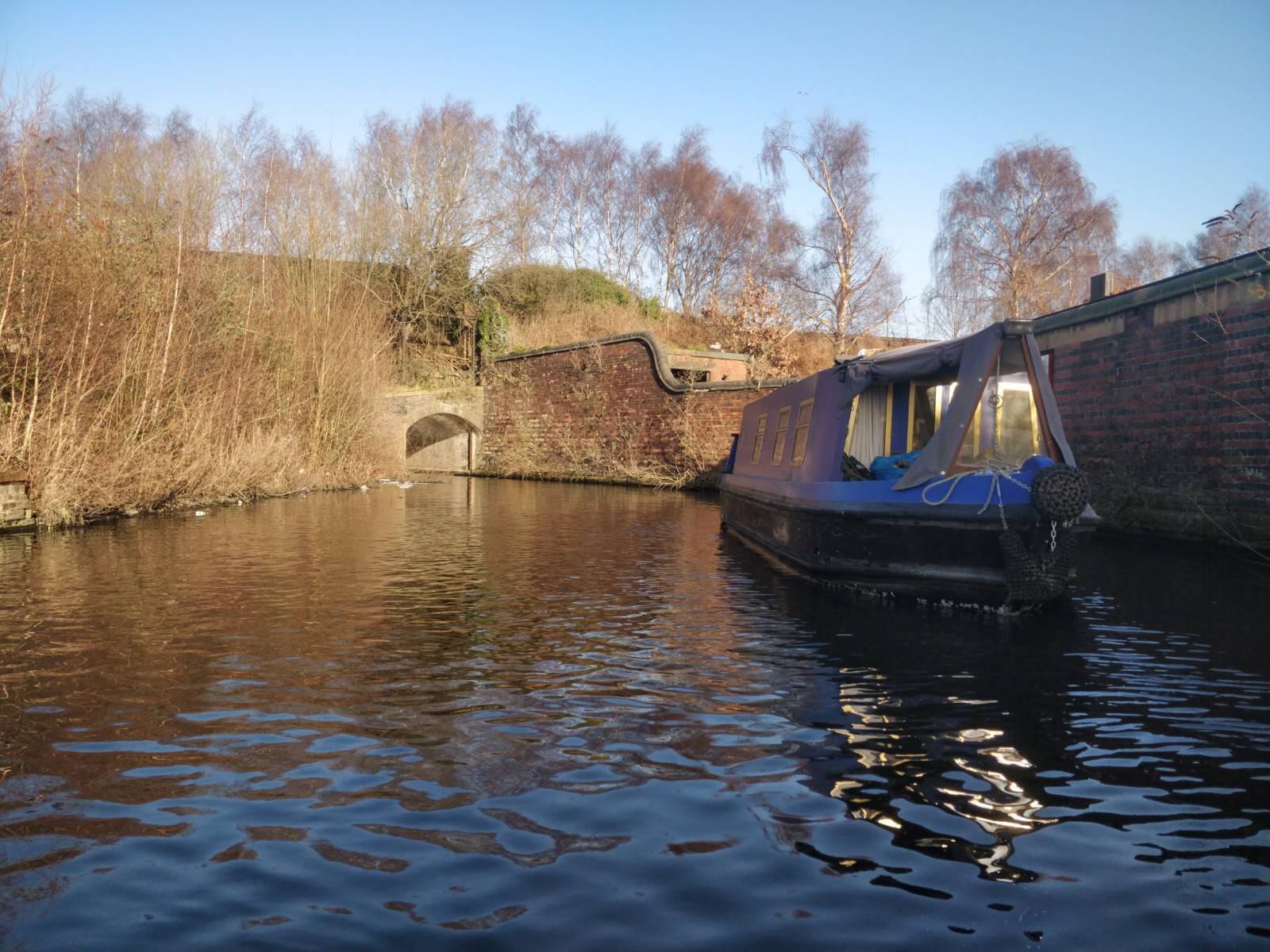-
Posts
764 -
Joined
-
Last visited
-
Days Won
1
Content Type
Profiles
Forums
Events
Gallery
Blogs
Store
Everything posted by Francis Herne
-
I can't think of many narrow locks (with either single or mitred bottom gates) that actually work like that either. When starting up or down a flight first thing in the morning I expect all the locks to be empty and am surprised if they aren't.
-
I am currently painting Atlas' running gear and trying to pick colours for things! She's in BW blue. I don't have any photos of the boat in this livery in her carrying life, never mind colour ones, so am looking at all the contemporaneous photos/videos I can find along with present-day versions I've seen. So far all I've concluded is that there's very little consistency! Planks and beams always seem to be the same colour as each other, but either blue or red oxide 'raddle'. Stands are usually green or blue with yellow chamfers, but a couple of examples of plain blue and at least one of plain red oxide. The blocks at the top of the stands are either plain blue, or blue/yellow diagonally quartered, or red/white/blue/yellow in various rotations. Similar options for the mast box. Does anyone have strong opinions, or a convincing argument, for any particular one being more appropriate? My default view is blue planks/beams/stands with yellow chamfers and triangles, if only because that's the fewest colours and will match the existing paint on the butty. Green stands do look nice though. Anything will be better than 'faded blue with peeling bare patches' as before.
-
Andy Tidy has some boxes of his archival stuff. I asked at Ellesmere Port last year whether they had any of Laurence Hogg's collection and was met with blank looks. The archive staff there never seem very familiar with what they have so that's far from conclusive.
-
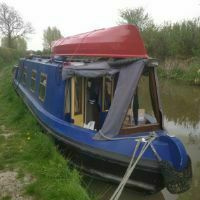
Weed Hatch - Mission Impossible
Francis Herne replied to DucksAreFaster's topic in Boat Building & Maintenance
The photo does help. Are you sure the hatch can't be tilted out forwards with the rudder over to one side? What's visible of it looks like the same design as mine and I can get maybe 30° of angle once the top plate is clear. You could increase that by cutting back the forward edge of the vertical spacers. Whether that can work depends on whether there's enough vertical clearance, you'd need 6-8" to the arm I think. -
The middle pier of the Harborne Railway bridge. It had an unusually tight curvature with the deck spans at an angle to each other. Photos by (or at least via) Steve King.
-
What is the offside vertical post of a single gate called? On twin gates it would be the mitre post, but a single gate isn't mitred!
-
Where are there non-standard windlass sizes still in use? I know about Great Ouse/Middle Level ones and Calder & Hebble spikes, any other versions?
-
The hydraulic paddles on the T&M below Stenson have large square spindles, even when rack-and-pinion paddles on the same lock have small tapers. I think the North Stratford lift bridges are large too - coming across one with a small taper on the Peak Forest last year was a surprise.
-

Weed Hatch - Mission Impossible
Francis Herne replied to DucksAreFaster's topic in Boat Building & Maintenance
This is very awkward on a Sea Otter because of the wide square counter and small shallow prop; the shaft must be almost horizontal and you can't get the angle unless lying down on a very low bank. Lying across the deck and holding the pole horizontally is another method that works much better on working boats than Otters - wide counter again and relatively high sides with a raised edge that's uncomfortable to lie on. Some photos needed to understand the problem with the hatch and steering gear I think. Despite the small number of centre-cockpit boats built they aren't all the same, some have cable steering. -
Coots are nesting every 50 yards along the Old Main Line as usual. A lot of them are hatching now. Two or three duck families also. Pair of Canada geese with 9 goslings at Titford Pumphouse.
-
Yes, I heard about that one pretty much in real time ("oh, still miles off, we're stuck here now"). Enterprise is incredibly deep though. I've done the Wyrley a few times with Atlas & Malus and once (after the same Pelsall rally) on a joey behind Tug No. 2. With both it's painfully slow in some places but not the same epic ordeal. I think with a tug of ≤3ft draught it would be reasonably possible with a certain amount of luck.
-
There's always next year! I'd love to see someone enter a long dayboat train in the 24h Challenge sometime. Anglesey Basin or Cannock Extension to <wherever>. Jon would have to consider the scoring again.
-
It was good fun. Thanks to @agg221 and several other people for letting me tag along on their boats. Full set of photos & videos at https://photos.app.goo.gl/NkU2CoE3Hvb4RfBs9
-
I spent several days last year crewing on a steam narrowboat while we worked through several fuel options, none of which were ideal. Khazakh coal is just awful, disgusting sulferous fumes. Cement-bound smokeless produces an unreasonable amount of ash. Molasses-bound smokeless smells nice but if the fire gets too hot produces huge plates of glassy clinker that are a pain to break up. Conversion to oil firing is now in progress...
-

BCN 24 Hour Marathon Challenge 2025
Francis Herne replied to BCN Challenge's topic in General Boating
We have collected both trolleys and one cone this afternoon on BCNS' workboat Phoenix so these are no longer available. Two cones we saw but missed are just north of Whimsey Bridge and about halfway from Tividale Basin to Dudley Port bridge, both towpath side and fully submerged. From the past competitors list, Joanna definitely isn't ready yet. @DShK on Jeannie Deans and Cedar was heading to Batchworth the week before so would face quite a challenge just to reach the BCN in time! -

Toxic chemical spill in Walsall Canal
Francis Herne replied to tree monkey's topic in Waterways News & Press
On the online 'customer forum' a few weeks ago the CRT reps said that Anochrome's insurer is directly footing the bill for the dredging work. The costs incurred earlier hadn't yet been recovered but they seemed optimistic that most of it will be eventually. -
Kings Norton stop lock obviously, but fixed open (and not through a tunnel!) The canal gate at Whaley Bridge transhipment warehouse while wider is a similar idea, lifting gate on the inside of an arched opening. That one is lifted by the winch and chain on the right of this picture...
-

Boat Licensing To Be Discussed on Radio 4
Francis Herne replied to Tim Lewis's topic in General Boating
There are only about three boats' worth of visitor mooring at Whaley Bridge and when I was there those seemed to be genuine visitors switching out every couple of days. The line of boats out to the junction are on CRT long-term towpath moorings. Of course that demonstrates the conflict between long-term and visitor moorings in desirable spots as in Arthur's post. -

Boat Licensing To Be Discussed on Radio 4
Francis Herne replied to Tim Lewis's topic in General Boating
It's a fairly common problem at the Black Country Living Museum. With the bridge over Lord Ward's arm closed indefinitely there's room for about five boats 'inside the fence'. At least three of those spaces were squatted on by the same boats from early January until late March and I wouldn't be surprised if they're still there now. That doesn't leave space for the usual visitors even in winter. The name and number have always been required. Enforcing display of the number, as CRT ought to do, makes the license disk irrelevant. Why trust an easily-faked paper printout when the rangers can check their own database in seconds? -
To be fair I already knew those had been gone for a while, so wasn't expecting them to have reappeared, but still as you say frustrating. No, I mean Canoeists like me who pay for a license, of which CRT get their cut. I've recently commented in another thread (deleted? - can't find it anymore) that BWB keys really aren't secure enough in the vanlife era and should be replaced in frequently-abused locations by electronic keycards tied to a license.
-
Or are out on historic boats with just a back cabin, canoes and similar, volunteering on a work party away from their boat, or just prefer to shower in a space more than 2ft square when the option is available. All four apply to me at various times.
-
The concrete box culvert is under Heath Street. Sadly that means no narrowboat access to behind the hospital even if dredged. The twin pipe culverts are where you were standing in your first two pictures. There's no sign of a passage under the feeder embankment at the Winson Green end and I think that was part of the Telford works, so probably cut off and buried for a short length at that end immediately after the new line opened. The arm extended almost to Winson Green until the southern half was infilled post-1960s. Yet another cut-off loop, Soho Foundry, began directly opposite the tunnel where the cast-iron bridge is. That survived a couple of decades until the 1840s railway severed it into two arms, which then remained in use into the 20th century.
-
I'd missed this thread before. Cape Arm, part of Brindley's original main line on the BCN. Your last photo is where the guillotine gate was in the tunnel under the feeder. The other two aren't reachable by narrowboat but are by canoe (or on foot?). Some bonus angles, with my friend Peter and myself holding the camera:
-
Almost all electric Triton units. Some of them aren't particularly powerful, you can have a trickle of hot water or a reasonable pressure of lukewarm. Others are pretty good. The only exception I can think of atm is Titford where BCNS is responsible for maintaining the boiler but CRT pay the gas bills.
-

PSS Stern Gland Installation
Francis Herne replied to RacyMole's topic in Boat Building & Maintenance
PSS stern glands are standard equipment on Sea Otters including mine. Various issues come up in the owners' group but very few people seem to have any problem with the PSS seals. They're face seals with a carbon bearing surface - external appearance is similar to the Vetus water-lubricated rubber lip seals (which I can imagine not liking silt) but they work very differently. Mine has been absolutely zero hassle and I would choose one over a conventional packed/greased stern tube.


